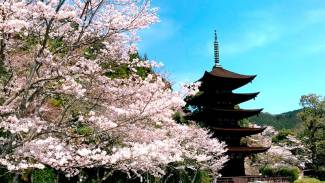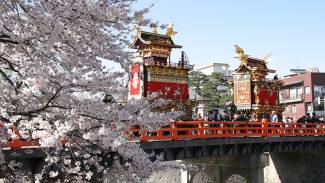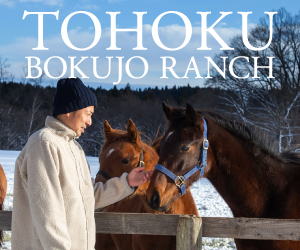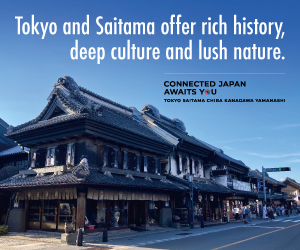A TASTE OF TOKYO
FANTASTIC EATS AWAIT IN FOODIE PARADISE
Sponsored content
Blend of skilled chefs, top ingredients, spirit and imagination make for a culinary journey unlike any in the world
There is a misconception that Japanese food is the same no matter where it’s found. One need barely to brush the surface of this notion to discover this isn’t true.
Cuisines imported from other countries are commonly altered to fit the tastes of the local population. Often the proprietors of these establishments are not natives of the country whose food they make and care little about preserving the integrity of the original they seek to market.
Tokyo, a city with worldwide visibility and home to an array of sought-after cuisines, is the place to experience authentic Japanese cooking. Within each country, there are both distinct regional dishes as well as variations on common themes. These variations can often be the result of regional delicacies and produce. Japan is no exception. However, the Japanese are known for their dedication to authenticity and innovation. The city’s chefs hone their skills to produce consistently reliable results and incorporate new ideas to create sophisticated cuisine of all types.
From sea to table
As the heart of Japan, and with its international bona fides and indisputable cachet, Tokyo is the destination for foodies and chefs alike. With attention to detail and freshness, the gastronomic adventure starts very early in the morning.
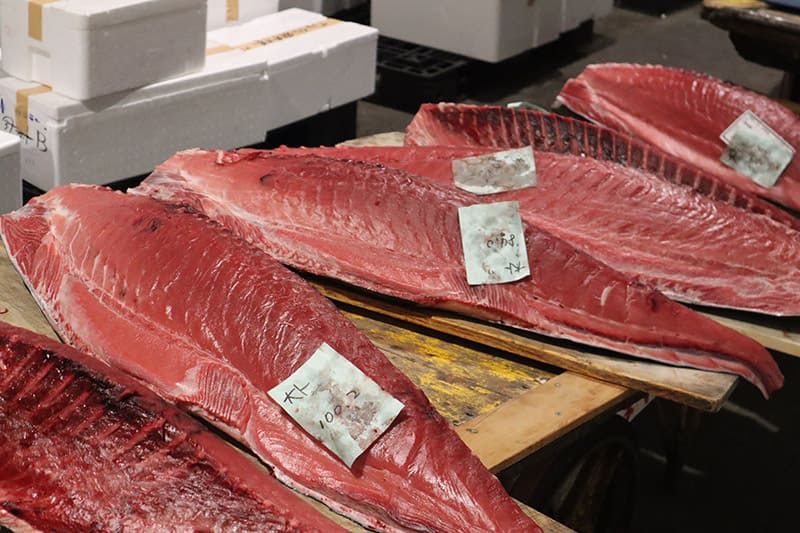
Before the hustle of Tokyo gets started, the hidden side of the food experience is underway at Toyosu’s fish market. Stepping into the halls of Toyosu is quite an experience. Scents of the ocean assertively greet the visitor, while all around activity bustles. Workers carry containers while carts careen around narrow pathways. Ice and fish scales crunch underfoot as box after teeming box of an unimaginable array of commodities appear. Amid this backdrop, some of the freshest maguro (tuna) on the planet can be found.
Here, the “King of Maguro,” Yukitaka Yamaguchi, is doing what he has done for decades: assessing the day’s catch. With deft precision, the fish are sliced, weighed and prepared for shipment. It’s clear that he has the trust of his clientele — wooden boards are covered with order slips, with repeat requests from restaurants in Tokyo and across Japan, as well as from overseas. It’s an exhilarating predawn experience that makes you realize the care going into every slice of fish.
Quality ingredients are paramount; no chef could make inferior materials shine. Having the freshest and highest-quality raw items is just as important as having a trusting relationship with one’s supplier. As the dealing plays out, one restaurant clearly shows it enjoys such a rapport.
Tucked away in the Ark Hills office and residential complex in Minato Ward is the well-awarded and oft-recognized Sushi Saito, run by Takashi Saito. For those only familiar with sushi restaurants outside of Japan, the first surprise may be the lack of soy sauce on offer.
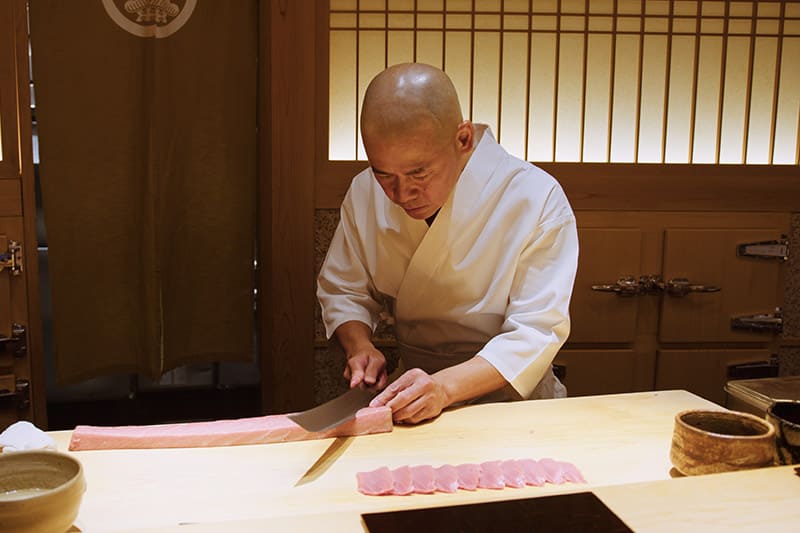
TABLECROSS INC.
Saito relies on his knowledge of fish, rice and flavorings, creating the perfect taste sensation from artful combinations that need no embellishment. Each morsel carries the depths of Saito’s years of experience. The precise cut of the flesh, the texture, temperature and amount of rice, the subtle accents of salt, sweet and umami, all integral to the successful whole. It was rated the No. 1 sushi restaurant for years and held three Michelin stars from 2010 to 2019. While reservations are very hard to come by, Saito’s expertise and acumen are aspirations for chefs in Japan and beyond, reminding the world of Tokyo’s preeminence.
Women in the spotlight
Obviously, sushi is the quintessential Japanese dish, and Tokyo is arguably the best place for the experience. That said, Japanese cuisine is most certainly not all about fish. Since Tokyo is widely recognized as a place where a broad variety of supplies are gathered, its ingredients are often at the forefront of the city’s culinary promotions.
One such event, which combined “artisanship” with “essence,” was “Artissense: A Female Chef Collaboration.” Held to showcase the city’s ingredients alongside its female talent, this exclusive one-day event offered an unparalleled peek into the vibrancy of Tokyo’s acclaimed dining scene.
As the number of tourists with sophisticated palates rises, food tourism has become a major travel draw. With culinary influences from around the world, the city has retained Japanese traditions while embracing culinary influences from around the globe, creating a dynamic and ever-evolving food landscape. The Artissense event on Jan. 14 saw a trio of female chefs tasked with teaming up to create a unique meal representing “Tokyo Today.”
The event was held at the monoma hall and restaurant on the 38th floor of Shibuya Sakura Stage, a new building that has become part of the chic ambiance associated with Tokyo’s uptown. Monoma offers a lushly appointed lounge adjoining an intimate dining space, with floor-to-ceiling windows that offer spectacular views of the neighborhood below.
Artissense was designed to showcase Tokyo’s wide-ranging culinary landscape by creating a one-of-a-kind menu blending the diverse cooking styles of three of the city’s finest up-and-coming talents. This carte du jour was described as a gastronomic relay to create a course meal that beautifully displayed both their significant achievements and the dynamic nature of the capital’s dining culture.
The evening opened with a display of talent by Asuka Yoshizaki on the koto. Her haunting melodies became an auditory metaphor for the evening’s cuisine: lush, accomplished and passionate. It embodied the synthesis of old and new, Western and Japanese, much as hearing music on a centuries-old instrument did while gazing at Shibuya’s sparkling skyline.
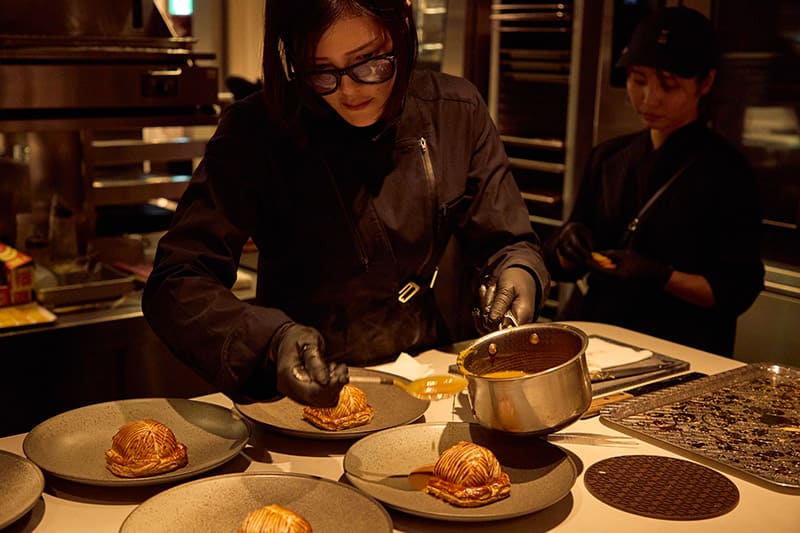
STYRISM INC.
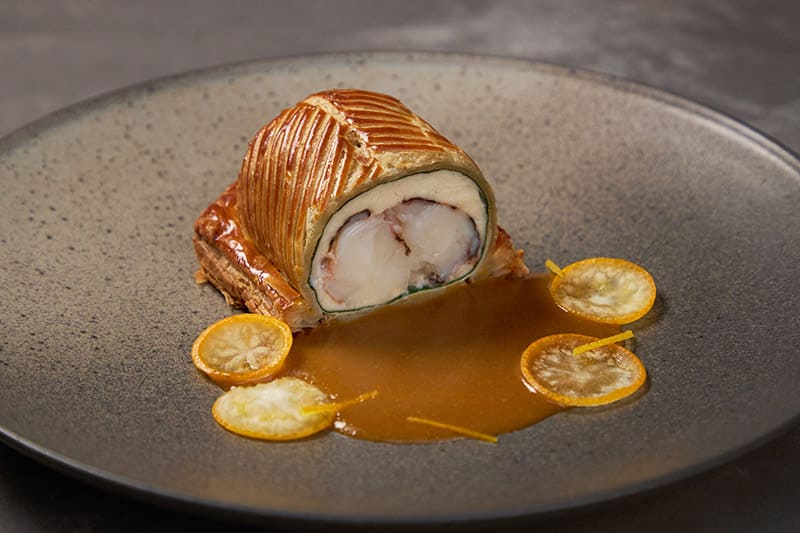
Natsuko Shoji, an exciting talent on Tokyo’s fine dining scene, prepared the opening dishes. Combining her love of art and haute couture with nonpareil pastry skills and French techniques, her food displays an uncommon blend of audacity and elegance. While battling the stereotype that women aren’t fit enough to be chefs, she was recognized by Asia’s 50 Best Restaurants as best pastry chef in 2020 and best female chef in 2022. Her dishes showcased her intimate knowledge of pastry in combination with uniquely Tokyoesque ingredients, featuring a delightful lobster en croute (baked in pastry). Among her other endeavors is her restaurant ete, described as “a unique small paradise in the world with an exclusive dining concept” and “a surreal, imaginative gourmet experience paired with omotenashi (Japanese hospitality).” She has recently begun collaborating with her alma mater to train a new generation of successor chefs to implement the U.N. sustainable development goals and resource conservation in their work.
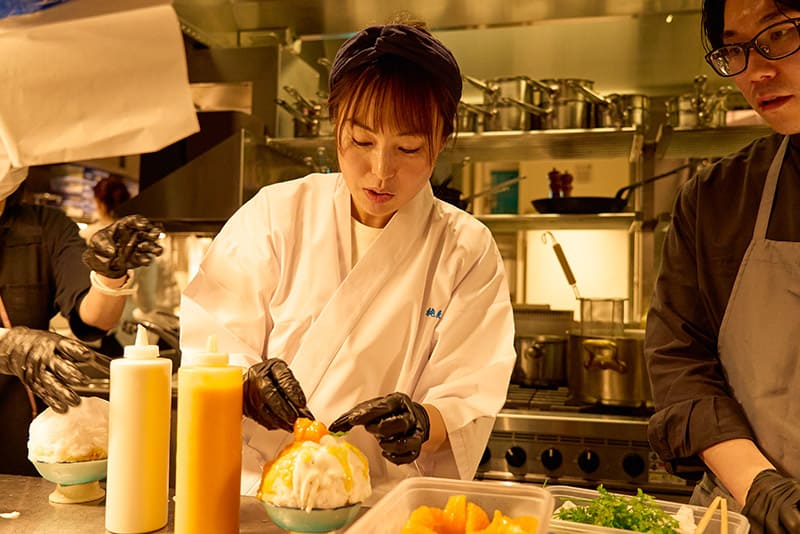
STYRISM INC.
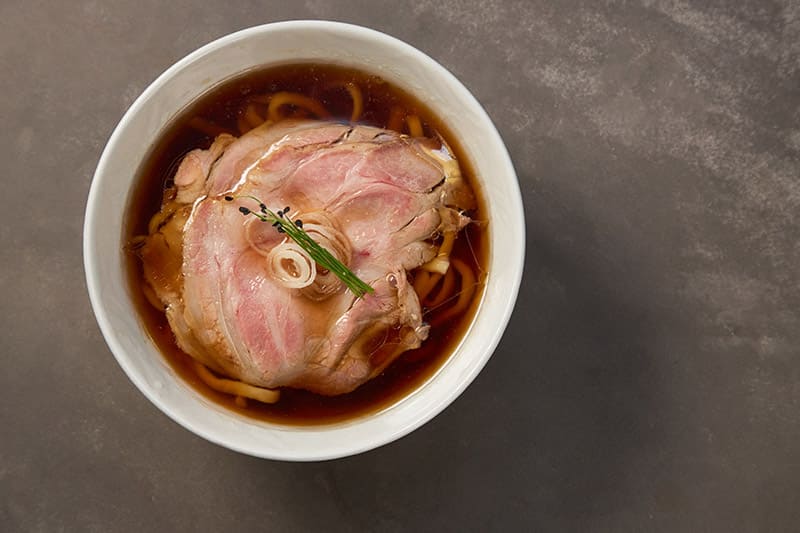
The next offerings were prepared by Jun Yajima, who trained at the famous Mendokoro Honda restaurant and afterward received a Michelin Bib Gourmand as the proprietress of a popular restaurant. Yajima served her delightful and delicate ramen in a broth rich with the wild flavor of Tokyo Shamo chicken, which is raised mainly in the Tama region. The perfectly al dente noodles were graced by tissue-thin slices of Tokyo X pork, an exclusive Tokyo commodity. Her tasty ramen was followed by a scrumptious shaved ice dish, a delight to behold, luscious and decadent with citrus fruit slices and a rich, creamy topping. Yajima recognizes that ramen is considered a “B-dish,” and hopes to elevate this cuisine as the wonderfully complex food it is. Currently, Yajima owns and operates Junmugi, an exclusive venue encompassing a tasting menu concept.
The desserts were prepared by Mineko Kato. Her craftsmanship in bread and pastry led her to Italy, where she served as pastry chef at renowned Michelin-starred restaurants. Back in Japan, Kato combines her love of Japanese ingredients with her passion for pastry-making and her abiding appreciation of the importance of forest preservation. The delicate fragrances of Tokyo strawberries blended with Japanese cypress in a dish are intended to remind the diner of the importance of conservationism. The evening’s final offering was a satoyama flower tart.
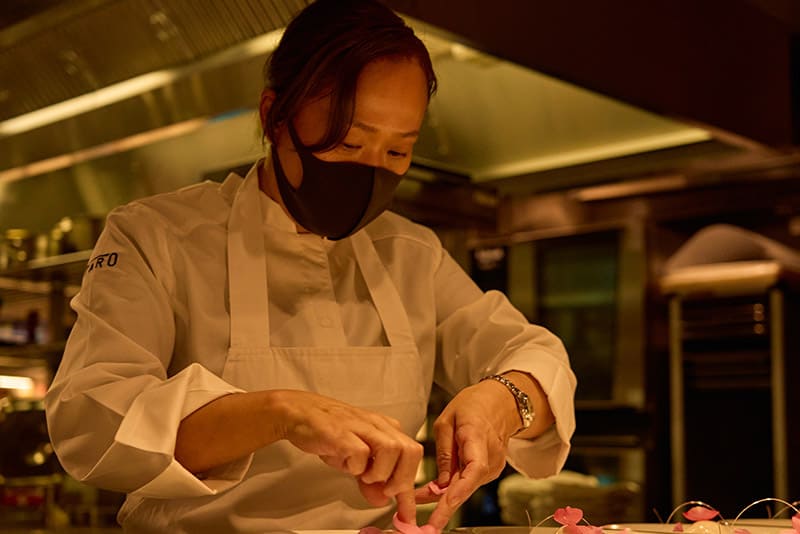
STYRISM INC.
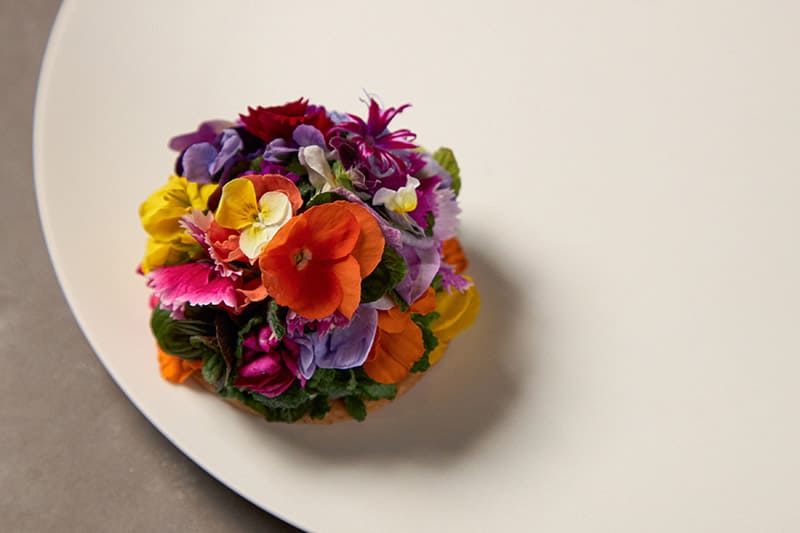
STYRISM INC.
Satoyama is a Japanese term that challenges definition. It embodies a concept of land conservation in accord with agriculture, connoting harmony between humans and the land they cultivate. Kato’s reverence for this concept was clear in her dish: a lush garden of flowers and herbs planted in a rich foundation mounted on a firm yet delicate pastry. Helming restaurant Faro, Kato was named Asia’s best pastry chef in 2024.
Artissense showcased up-and-coming female chefs who use their talent to create culinary masterpieces from Tokyo’s top-quality ingredients. These gifted chefs are keen to share the city’s cuisine with a worldwide audience.
The journey to perfection
Freshness, artisanal skills and diversity are on offer here in Tokyo. How about quality Western food? It would come as no surprise to find a decent hamburger place in the heart of Tokyo’s hip and trendy Azabu environs. It might be a surprise to find no condiments on the tables. The biggest one, however, is that the burgers on the star-shaped plates, while having their origins as America’s iconic food, stand as a perfect testament to a Japanese chef’s dedication to mastering and perfecting the original. At Aldebaran, burgers are feats of culinary excellence. It’s not just the 100% wagyu, though that’s certainly a feature. These creations are a taste phenom worthy of accolades applied to the best sushi: All of the elements are a fusion creating the perfect whole.
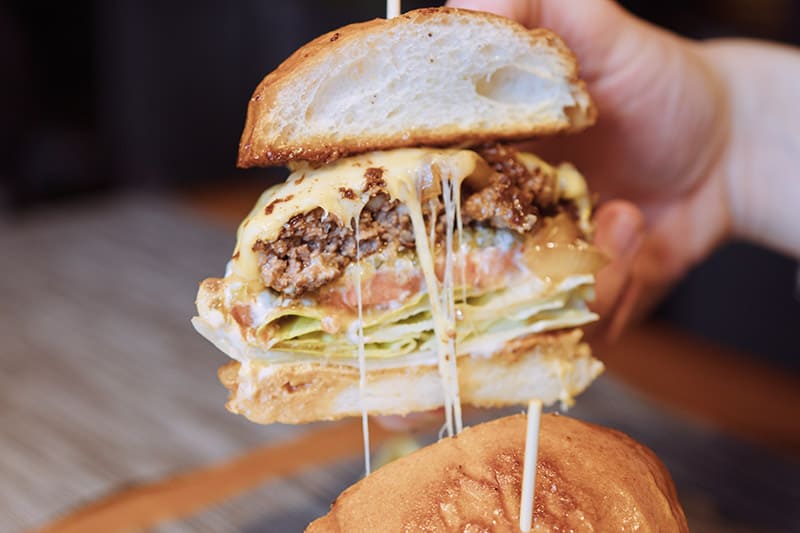
TABLECROSS INC.
The chef’s approach strikes a perfect harmonious chord, proving that Tokyo flair can elevate an American classic to five-star fare.
Flawlessness is an abiding goal in many Japanese endeavors. The Japanese also understand that function is only one aspect of any undertaking. Beauty is of equal importance. An example of this incorporation can be seen in Edo kiriko (cut glass) at Horiguchi Kiriko. Edo kiriko is a valued traditional handicraft of Tokyo (formerly called Edo), with techniques handed down over the years. Glasses are cut with fine detail — the finish is clear and brilliant. Horiguchi’s artisans know this and take it as a solemn mission to produce the highest-quality products. Each hand-cut item is a gem, reflecting light in kaleidoscopes. These reflections shift, depending on the level of liquid and the color and texture of the surface. From exquisite beauty to faultless function, what Tokyo gastronomical adventure would be complete without a visit to the capital’s premier kitchen gear destination of Kappabashi? This popular area features dozens of shops specializing in anything food-related. The full-to-bursting shops carry pots, knives, tableware, gadgets and even the famous plastic food samples used in many restaurant displays. The area is distinctly downtown, an experience for curious tourists, weekend dabblers, serious hobbyists and master chefs alike.
About 30 minutes south, in the politically cozy entertainment district of Akasaka-Mitsuke, the skill and wisdom of talented master chefs, the superlative components, beautiful table settings and Japan’s famed hospitality all come together to create the truly magical at Makitori Shinkobe.
The cozy and inviting atmosphere is reminiscent of hearth and home. The scent of woodsmoke curls into the room, inviting visitors to settle around the fire where the chef uses a special pipe to rouse the flames to grill succulent delicacies. Open-flame cooking, while difficult to master, produces magical flavors and textures unattainable with traditional charcoal grilling. The lineup was like a walk through a forest, with tender chicken, mushrooms and root vegetables on offer. The final dish, candied shine muscat grapes, were presented as if they’d just been plucked from a garden of wildflowers flourishing outside a cottage of fairies.
Together with drink pairings, the meal was a whimsical journey that bucks the idea that yakitori can only be grilled over charcoal, creating a new Tokyo classic.
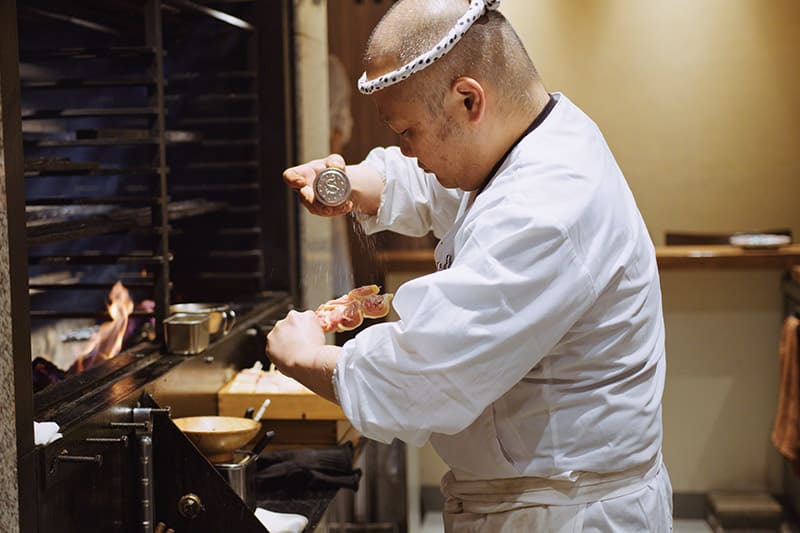
TABLECROSS INC.
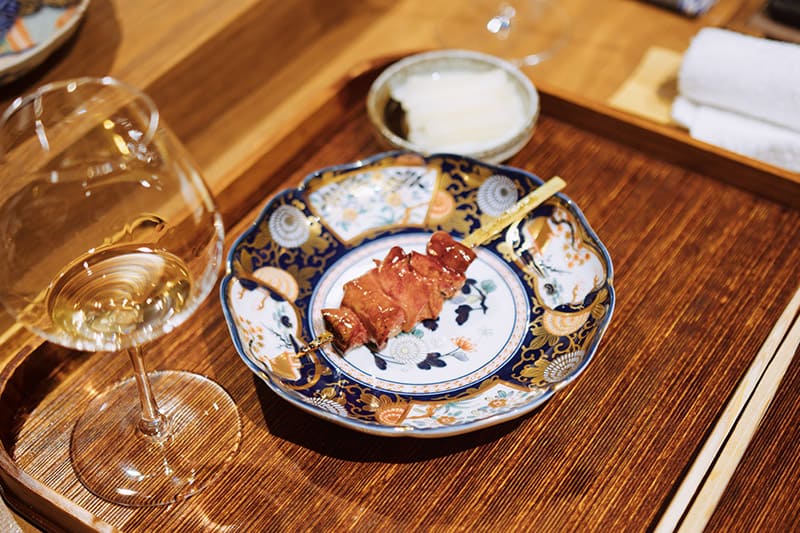
Foodie paradise
As a dish can only be as good as its components, freshness and quality are paramount. But not even premier raw materials can come together in a tailored whole without the talent, dedication and vision of those orchestrating the final product.
In this Tokyo food scene journey, it’s clear the chefs who bring their creations to life are the envy of the food world. Seasoned veterans who’ve honed their craft for decades as well as fresh up-and-comers are showcased here. There are wonders around every corner, in every neighborhood, in every conceivable genre. The possibilities are only confined by the time available to explore and enjoy what varieties of food this city of cuisine offers.
At the heart of Japan and with its international stature and undeniable prestige, Tokyo’s food scene is the pinnacle for gourmets and gourmands alike.
This article is sponsored by the Tokyo Metropolitan Government.



